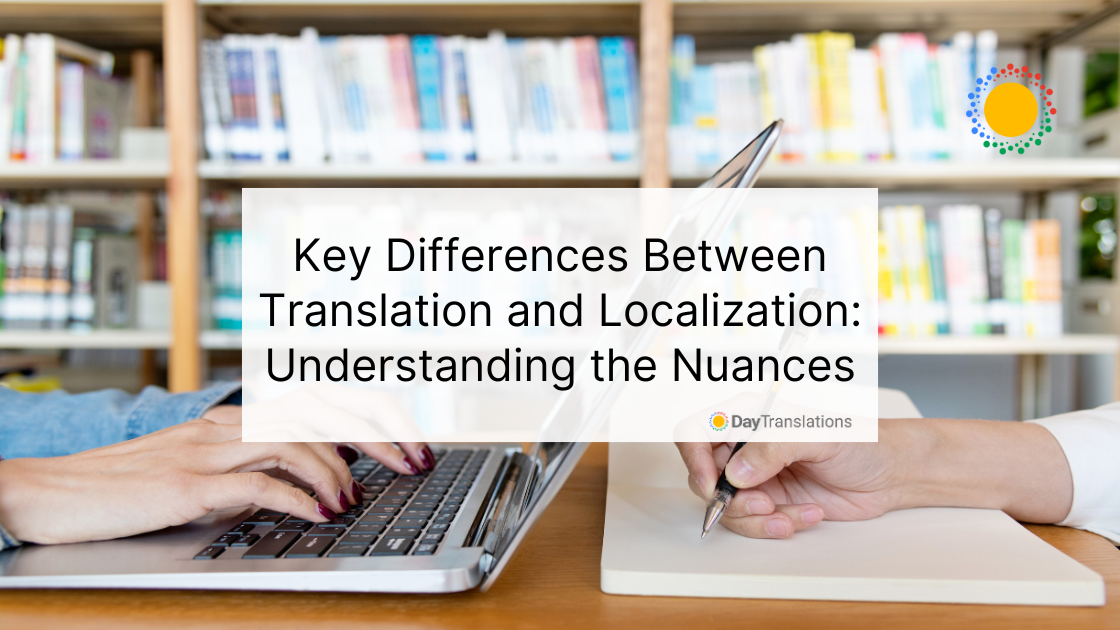In an increasingly interconnected global marketplace, businesses are expanding their reach beyond borders, aiming to tap into new markets and engage with diverse audiences. This expansion requires us to adapt content to suit different cultural, linguistic, and regional requirements. This is where translation and localization play crucial roles. While the terms “translation” and “localization” are often used interchangeably, they represent distinct processes with unique objectives. In this article, we will delve into the key differences between translation and localization, shedding light on their nuances and highlighting their respective significance in today’s globalized world.
Dissecting the Differences Between Translation and Localization
Translation: Bridging Language Barriers
Translation is the process of converting written or spoken content from one language to another while retaining its original meaning. It focuses primarily on linguistic accuracy, ensuring that the message and intent of the source material are faithfully conveyed in the new native language. Skilled translators possess a deep understanding of both the source and target languages, allowing them to accurately convey the nuances and cultural references inherent in the original text.
Key characteristics of translation include:
Linguistic Accuracy
Translators and translation agencies prioritize the fidelity of the message and aim to preserve the intended meaning in other languages while adapting it throughout the translation project.
Textual Context for the Target Language
Translators focus on the content itself, emphasizing the accurate conversion of words, phrases, and sentence structures.
Source-Centric Approach
The primary goal of translation is to maintain the integrity of the source text, ensuring that the translated content resonates with the original audience.
The Localization Process: Adapting According to Cultural Differences
Localization, unlike website translation, is a more comprehensive process that goes beyond mere language conversion. It involves adapting content to suit the cultural, linguistic, and regional preferences of the target audiences. Localization aims to create a seamless user experience by considering factors such as cultural sensitivities, idiomatic expressions, legal requirements, currency formats, date formats, and more. By tailoring the content to the specific needs of the target markets, localization helps businesses effectively engage with their audience and build trust.
Key characteristics of localization include:
Cultural Adaptation
Localization focuses on adapting the content to align with the cultural norms, preferences, and expectations of the target audience.
Website Localization Focused on the User Experience
Localization takes into account user interface elements, visuals, and design aspects to ensure an immersive and intuitive experience for the target users.
Market Relevance
Localizers analyze market trends, regional preferences, and local regulations to ensure the localized content is suitable and compliant for the target market. Unlike a direct translation into different languages, a localization strategy ensures that the cultural context of marketing materials are suitable for the new market while still maintaining the messaging goal of the existing content.
Final Thoughts on the Differences Between Translation and Localization
Translation and localization are distinct processes, each with its own objectives and requirements. While translations focuses primarily on accurately conveying the meaning of the source text, localization goes beyond language and adapts content to fit the cultural and regional nuances of the target audience. Both translation and localization play critical roles in facilitating effective communication and establishing meaningful connections with diverse markets. Understanding the differences between the localization and translation industry is crucial for businesses looking to expand globally, as it allows them to strategize and allocate resources effectively, ensuring their content resonates with audiences worldwide.














Sorry, the comment form is closed at this time.